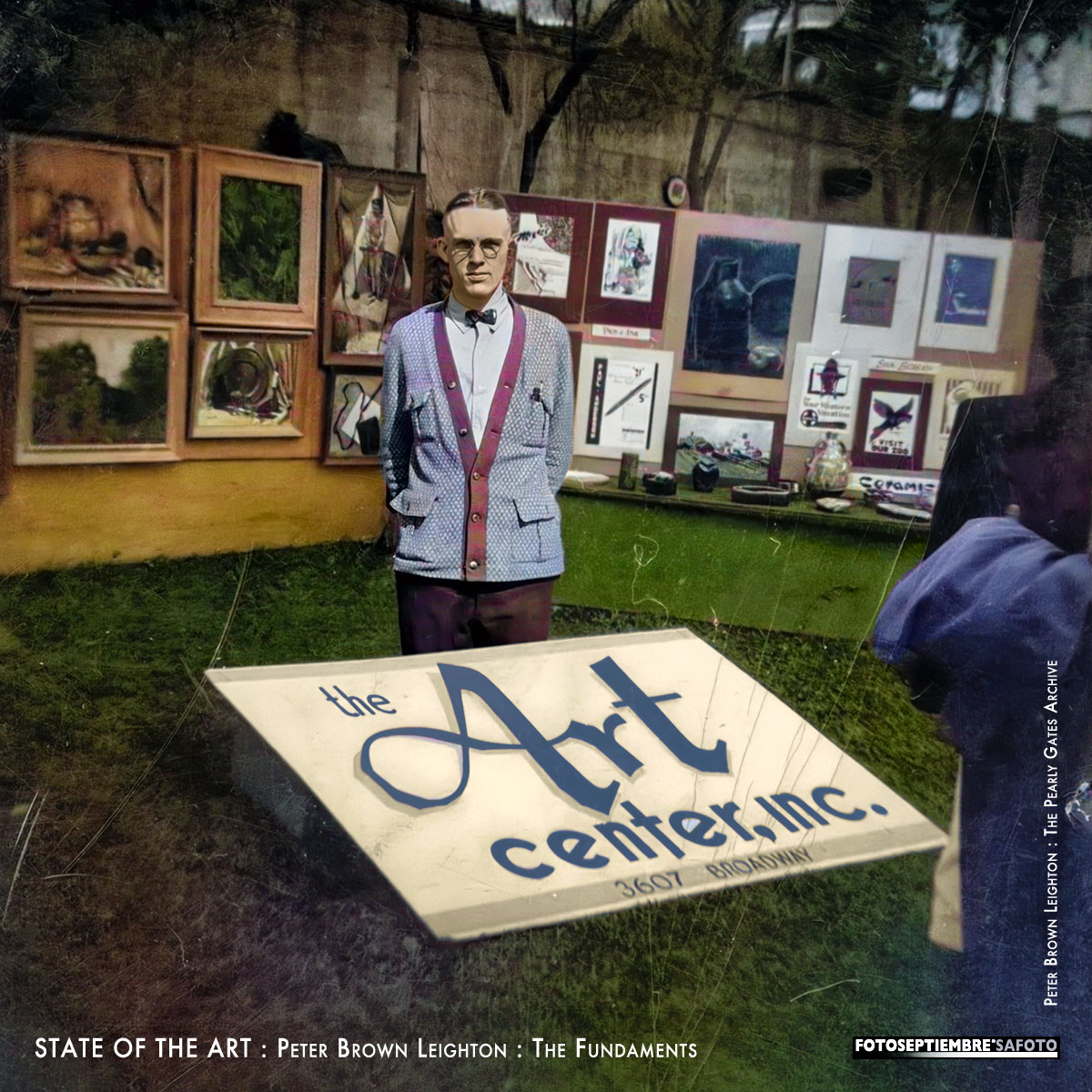State Of The Art : Peter Brown Leighton : The Fundaments
State Of The Art : Peter Brown Leighton : The Fundaments
#fotoseptiembre #safoto #stateoftheart #peterbrownleighton #thefundaments #art #artmarket #artcollectors #artexperts #photography #humanity #polity #sanantonio #texashillcountry #texas
 The Fundaments
The Fundaments
Herein, I offer a set of principles, or “fundaments”¹, distilled from notes I’ve taken over the years about that mysterious, alternative way of dealing with reality that we call… art.
Fundament 1
Broadly stated, at some point during its execution, the making of art requires a condition to arise that captures and actively engages one’s imagination at a level that results in the suspension of time.
Fundament 2
Anything can be the stuff from which art is made. There are no exceptions.
Fundament 3
When an artist creates a work they cannot explain, it becomes inevitable that everyone to whom this work is shown will ask for an explanation.
Fundament 4
A finished work of art has no intrinsic, convertible value. In the most basic of economic terms, once it has been completed, the raw materials, tangible or intangible², obliged to construct it will at face value be worth less than they were before the work was begun.
If it has been made for sale, calculating a work’s market value, therefore, always begins with a leap of faith on the part of both the buyer and the seller.³
Fundament 5
The hierarchy of ART collecting is governed by the perceived exclusivity and scarcity of the artifacts being sold in any given market, whether aimed at the lowest common denominator in the hierarchy or the greatest common factor. Meaning the number of “whale” collectors bidding at the highest levels of ART acquisition may well equal no more than a few hundred participants worldwide, all of whom are making investments within an artificially created economy whose financial health they will always be vitally interested in maintaining and protecting.
Fundament 6
“art” becomes ART at that point where creativity, commerce, and the artist’s acumen for self-promotion converge. One might refer to the statistical absurdity of this confluence actually occurring as “Pinning the Tail on the Donkey”.
Fundament 7
The makings of lowercase art are organic, spontaneous, and ephemeral. ART, its apotheosis, is categorized, preserved, and immortalized. At its worst, in between an artwork’s conception and its glorification, lies a darwinian jungle of pretension, intellectual tomfoolery, and economic self-interest.
Fundament 8
It is important to keep in mind that the business of ART and the making art, in terms of their relationship to one another, share only one reason for being in common. Survival.
Fundament 9
At some point in the evolution of their practice, the committed artist will have to decide whether the person they are becoming should be considered either more or less important than the work they are producing.⁴
Fundament 10
Don’t give up your day job.
Notes:
1
Depending on your preference: fundament | ˈfʌndəm(ə)nt | noun 1 the foundation or basis of something: the fundaments of their promises have proven to be lies. 2 formal: a person’s buttocks or anus. Some might consider my use of “fundament” in the context of this piece to be crude and in bad taste depending on which definition one chooses to believe I’m meaning to apply. All I can say is words are weird.
2
Such as the cost of personal time devoted to the work prior to, during, and after its completion, for example
3
““Bad taste is real taste…and good taste is the residue of someone else’s privilege.”
Dave Hickey, “Air Guitar: Essays on Art & Democracy”. In other words, in our society, the attachment of a monetary value to an artwork is the first of many rites of passage the work must endure before the Art World’s tastemakers will deign to consider it.
This, as opposed, say, to the example of the Illuminations of medieval monks – their artworks rendered in books by hand and candlelight back in the day for no monetary reward at all. The few existing examples of their efforts, of course, like experiences depicted in Mastercard commercials, are now, ironically, considered to be “priceless”.
4
“It’s not what the artist does that counts,” Picasso once said, “but what he is.” It is telling that Picasso, whose character and integrity have been seriously questioned since his death, would have chosen to use the pronoun “what” instead of “who” in his comment.
While there is, perhaps, enough linguistic wiggle room here to debate “what” he was meaning to convey, the fault lines separating the facts of his personal shortcomings and the celebrity status to which he was so assiduously addicted, in hindsight, offer up enough perspective for his artistic career to at least serve as a cautionary, soul-sucking example of the choices one often has to make in pursuit of what qualifies as success these days.
All Copyrights Peter Brown Leighton
•••
